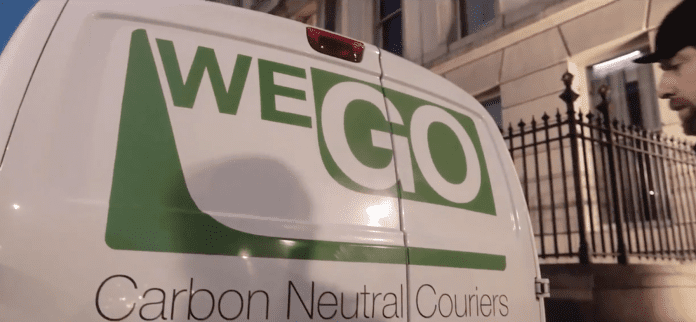IoT telematics solution takes cost out of grocery delivery
Farmdrop, an ethical grocer based in London, has seen double-digit improvements in driver behavior and fuel consumption thanks to the implementation of the internet of things (IoT). Using a custom-tailored solution, Farmdrop tapped services from Geotab to monitor electric energy use and fuel high engagement, achieving “impressive” results.
Supplying local and sustainably produced food via an online grocery platform and mobile app, Farmdrop decided to adopt telematics as a way to extend its responsible and ethical business approach in delivery operations. Mike Pearson, responsible for growth at Farndrop, explained that reducing emissions was something the company felt passionately about.
“Farmdrop’s mission is to fix the food chain and so reducing emissions from food delivery is important to use. That’s why we use 100% electric delivery vehicles where possible.”
Farmdrop needed to have insight about van location and delivery status, as well as understanding how drivers were using the vehicles. However, monitoring the fully electric vehicles came with several operational challenges. These included: the newness of electric vehicle technology leads to a lack of real-world information associated to their use and in some cases discrepancies; running out of battery power; confirming deliveries could be serviced as promised.
With these unique challenges, Farmdrop turned to Geotab. Since using Geotab GO devices since March 2018, the company has benefited from a user-friendly and cost-effective solution.
“We chose Geotab for a number of reasons,” says Pearson. “It had spent a lot of time decoding the signals emitted by electric vans and interpreting them into easy-to-use data and graphics. It was also very flexible to our needs, helped us understand the product through a trial period, and supported us in setting up our fleet. It has also been very flexible with bespoke charts/graphs and data since we went live.”
An interesting aspect of the implementation was the initial pushback from drivers, even though the technical deployment was a success. To tackle this, Pearson used gamification to help drivers engage more and accept the solution, courtesy of Geotab’s app marketplace According to Pearson, “the majority of drivers who picked up the app in a positive way wanted to beat their own score and beat their peers on a monthly basis.” From a business perspective, insights on driving trends also became a useful tool for the management team.
“Unlike other telematics companies, our technology is expandable and is based on an open platform,” explains Edward Kulperger, ICD.D, vice president at Geotab Europe. “This means that customers have the ability to customise and tailor their solutions to easily reflect the needs of their fleet.
“In this particular instance, Farmdrop chose the D2Go Driver Challenge Gamification App from Geotab’s Marketplace to help gamify their driver’s experience. Through the gamification app, Farmdrop was able to measure driver performance based on speeding, seat belt use, harsh braking, acceleration, and cornering.”
The partnership resulted in a 33% reduction in negative driver behaviour and a 27% decrease in electric charge use. As for the future, Pearson is hoping to integrate the Geotab functionality into its customer service operation to alert customers about delays in their orders and to give an exact estimated time of arrivals (ETAs). He also hopes to integrate the company’s separate route planning software with Geotab to monitor and measure driver downtime.

